
Acupressure and acupuncture are two pillars of Traditional Chinese Medicine that have stood the test of time, offering healing and relief for centuries. At first glance, they may seem like close cousins—both targeting pressure points along the body’s meridians to balance energy flow and promote well-being. Yet, looking more closely, their distinctive approaches and applications reveal a fascinating spectrum of healing potentials. The key difference is that acupuncture uses thin needles to stimulate points, while acupressure involves applying physical pressure with hands, fingers, or tools.
Appreciating the subtle art of energy manipulation through these techniques moves well beyond surface-level pain relief. It requires understanding their roots in ancient philosophy, recognizing modern scientific interpretations, and valuing the empathy they bring to those navigating chronic conditions, stress, and more. This rich landscape invites clarity, depth, and a compassionate perspective for anyone curious about choosing between acupressure or acupuncture to support their health needs.
Acupressure and acupuncture are two pillars of Traditional Chinese Medicine that have stood the test of time, offering healing and relief for centuries. At first glance, they may seem like close cousins—both targeting pressure points along the body’s meridians to balance energy flow and promote well-being. Yet, looking more closely, their distinctive approaches and applications reveal a fascinating spectrum of healing potentials. The key difference is that acupuncture uses thin needles to stimulate points, while acupressure involves applying physical pressure with hands, fingers, or tools.
Appreciating the subtle art of energy manipulation through these techniques moves well beyond surface-level pain relief. It requires understanding their roots in ancient philosophy, recognizing modern scientific interpretations, and valuing the empathy they bring to those navigating chronic conditions, stress, and more. This rich landscape invites clarity, depth, and a compassionate perspective for anyone curious about choosing between acupressure or acupuncture to support their health needs.
Acupuncture is a traditional healing technique from Chinese medicine involving the insertion of fine needles into specific points on the body called acupoints. These points lie along meridians, pathways believed to channel vital energy, or “Qi.”
Key aspects of acupuncture:
Acupressure is a non-invasive healing method that stimulates specific acupoints on the body using manual pressure instead of needles. This technique employs fingers, palms, or specialized tools to apply pressure and gentle massage to revive energy flow and restore balance.
Key features of acupressure:
The primary difference is in how the therapies are applied: acupressure uses sustained pressure from hands or devices, while acupuncture involves inserting fine needles into the skin. This leads to different sensations, as acupuncture can produce a more intense, localized “De Qi” feeling. This distinct response plays a key role in acupuncture’s therapeutic effects.
Acupuncture needles reach beneath the skin to stimulate nerve fibers and connective tissues, triggering the release of pain-relieving neurotransmitters and hormones. Acupressure works on the surface by applying pressure to acupoints, promoting circulation and muscle relaxation. Both methods activate the body’s endogenous opioid system but engage different reflex pathways and treatment depths.
Because acupuncture is invasive and requires precise needle placement, it must be performed by licensed professionals. In contrast, acupressure can be done by individuals themselves or by therapists without specialized licensing. This makes acupressure a more accessible option that encourages patient involvement in their healing.
Acupressure is highly accessible since it does not require special tools or appointments, making it convenient and affordable. Acupuncture usually requires visits to licensed practitioners, sterile needles, and clinical settings, often making it more costly and less flexible. Insurance coverage for acupuncture varies, which can also affect access.
Acupuncture carries risks such as minor bleeding or infection, especially if performed improperly, and is not recommended for those with bleeding disorders or certain implants. Acupressure is generally safe but should be used cautiously during pregnancy, injury, or chronic illness. Both approaches advise consulting healthcare providers when combined with other medical treatments.
Acupuncturists must obtain licenses and comply with strict regulations at the state or national level. Acupressure typically falls under less formal certification systems, like massage therapy or holistic health training. Awareness of these standards is important to ensure safe and professional care.
Both modalities operate on the foundational concepts of meridians and acupoints, channels through which Qi flows to maintain health. Disruptions in this flow are thought to cause illness or discomfort. Whether through needles or pressure, restoring balance to these pathways is central in both approaches.
Pain management, stress reduction, and enhancement of bodily functions like digestion, immunity, and sleep are common therapeutic goals in both therapies. Conditions such as headaches, arthritis, insomnia, and anxiety respond to either method, though individual preference and severity guide choice.
Both practices promote relaxation, reduce muscle tension, and support the nervous system, thereby contributing to mental clarity, emotional balance, and overall vitality. The rhythmic stimulation of points encourages mindfulness and presence, often catalyzing profound introspection and emotional release.
Acupuncture and acupressure reduce pain through different but complementary biological mechanisms. Needle stimulation in acupuncture targets deeper neural pathways for quicker relief, while acupressure promotes gradual comfort via improved circulation and muscle relaxation. Combined use of both often yields enhanced pain management outcomes.
Both acupressure and acupuncture activate the parasympathetic nervous system, helping to calm stress and anxiety. Patients frequently report mood improvement, tension relief, and better sleep after treatment. Brain imaging studies confirm these therapies induce changes in areas responsible for emotional regulation and pain processing.
These modalities support chronic illness management by boosting immunity, enhancing circulation, and balancing hormones. Conditions like fibromyalgia, digestive issues, and migraines benefit from integrative care that combines acupuncture and acupressure techniques. This holistic approach targets both symptoms and underlying energetic imbalances.
Acupressure and acupuncture can be used in tandem to maximize healing and balance in integrative care. Acupuncture is well-suited for acute, targeted treatment, while acupressure allows for ongoing support between sessions. Together, they offer a holistic approach that enhances both immediate relief and sustained well-being.
Clinical research indicates that using both therapies together may boost pain threshold, improve sleep, and raise overall energy more than either alone. This synergy stems from how acupuncture delivers precise, deep stimulation, while acupressure provides gentle, ongoing care. The combined approach allows each method to address different layers of the healing process.
Patients receiving acupuncture can benefit from learning simple acupressure techniques to reinforce effects at home. Healthcare providers often teach these methods, empowering patients to become active participants in their recovery. Integrating both therapies in your routine can extend relief, build autonomy, and support lasting health improvements.
Choosing the right therapy for your wellness journey is deeply personal and dynamic. Both acupressure and acupuncture offer profound paths to healing by reconnecting body and mind through the elegant interplay of energy and physiology. We encourage you to explore these therapies with openness and curiosity, embracing the wisdom they impart.
At ACA Acupuncture & Wellness, our commitment is to guide you compassionately through this journey, providing expert care rooted in tradition and informed by modern science. Together, we weave ancient knowledge and contemporary insight into a personalized path toward your best health.
Sources:
Chen, Ya-Wen, and Hsiu-Hung Wang. “The Effectiveness of Acupressure on Relieving Pain: A Systematic Review.” Pain Management Nursing, vol. 15, no. 2, June 2014, pp. 539–550, https://doi.org/10.1016/j.pmn.2012.12.005.
Kaptchuk, T. J. (2002). Acupuncture: theory, efficacy, and practice. Annals of Internal Medicine, 136(5), 374. https://doi.org/10.7326/0003-4819-136-5-200203050-00010
Both acupuncture and acupressure have unique strengths that make them valuable in different situations. Acupuncture often provides deeper and faster relief for chronic or severe conditions by stimulating specific acupoints with needles. On the other hand, acupressure offers accessible, non-invasive, and ongoing support that can be easily practiced at home for self-care.
Yes, acupressure works by stimulating nerve endings and enhancing blood circulation in targeted areas. This stimulation can help relieve pain, reduce stress, and promote the body’s natural healing processes. Several clinical studies continue to support acupressure’s effectiveness for a variety of conditions.
Acupressure is commonly used to manage pain, reduce stress, and alleviate nausea. It is also effective in relieving headaches and improving sleep quality. Many people incorporate acupressure as part of their routine wellness practices to maintain balance and relaxation.
Certain acupuncture points are known for their broad and powerful effects. For example, LI4 (Hegu) is widely used for relieving pain and stress, while ST36 (Zusanli) is celebrated for boosting energy and strengthening immunity. These points are often a focus in treatments due to their versatility.
Acupressure should be avoided on areas with open wounds, infections, or fractures to prevent worsening injury. Pregnant women should exercise caution and consult a professional before applying acupressure, especially during early pregnancy. It is always best to seek guidance if you have any underlying medical conditions.
People with bleeding disorders or those taking blood thinners should be cautious with acupuncture because of the risk of bleeding or bruising. Additionally, individuals with pacemakers or certain medical implants need to consult their healthcare providers before treatment. Those with severe needle phobia might find acupuncture uncomfortable and should discuss alternative options with a practitioner.
LOCATIONS
MANHATTAN
QUEENS
NEW JERSEY
CALIFORNIA

The over $4 billion US acupuncture market offers a great opportunity with over 10% annual growth rates and a continuing flow of new patients interested in the benefits of acupuncture.